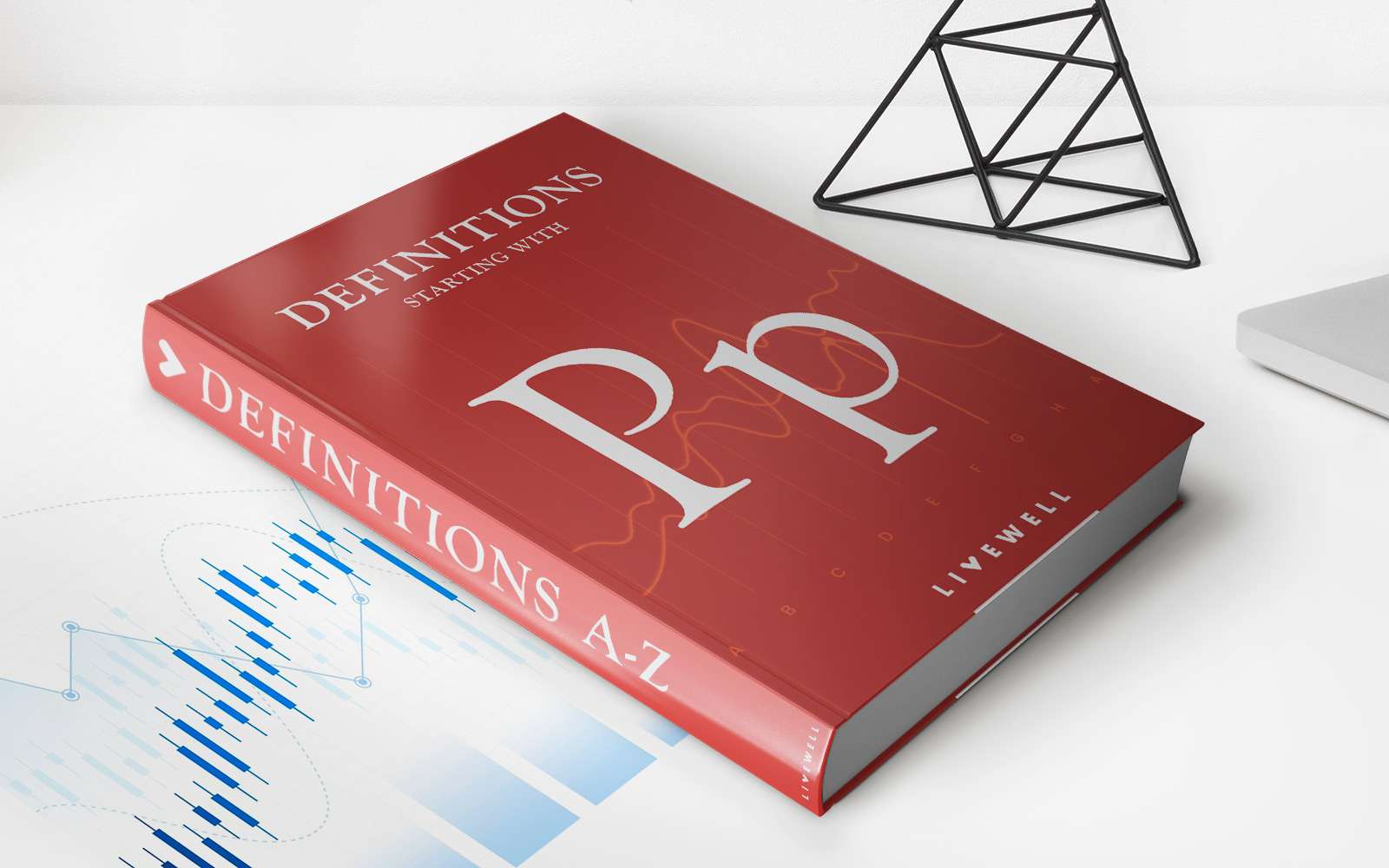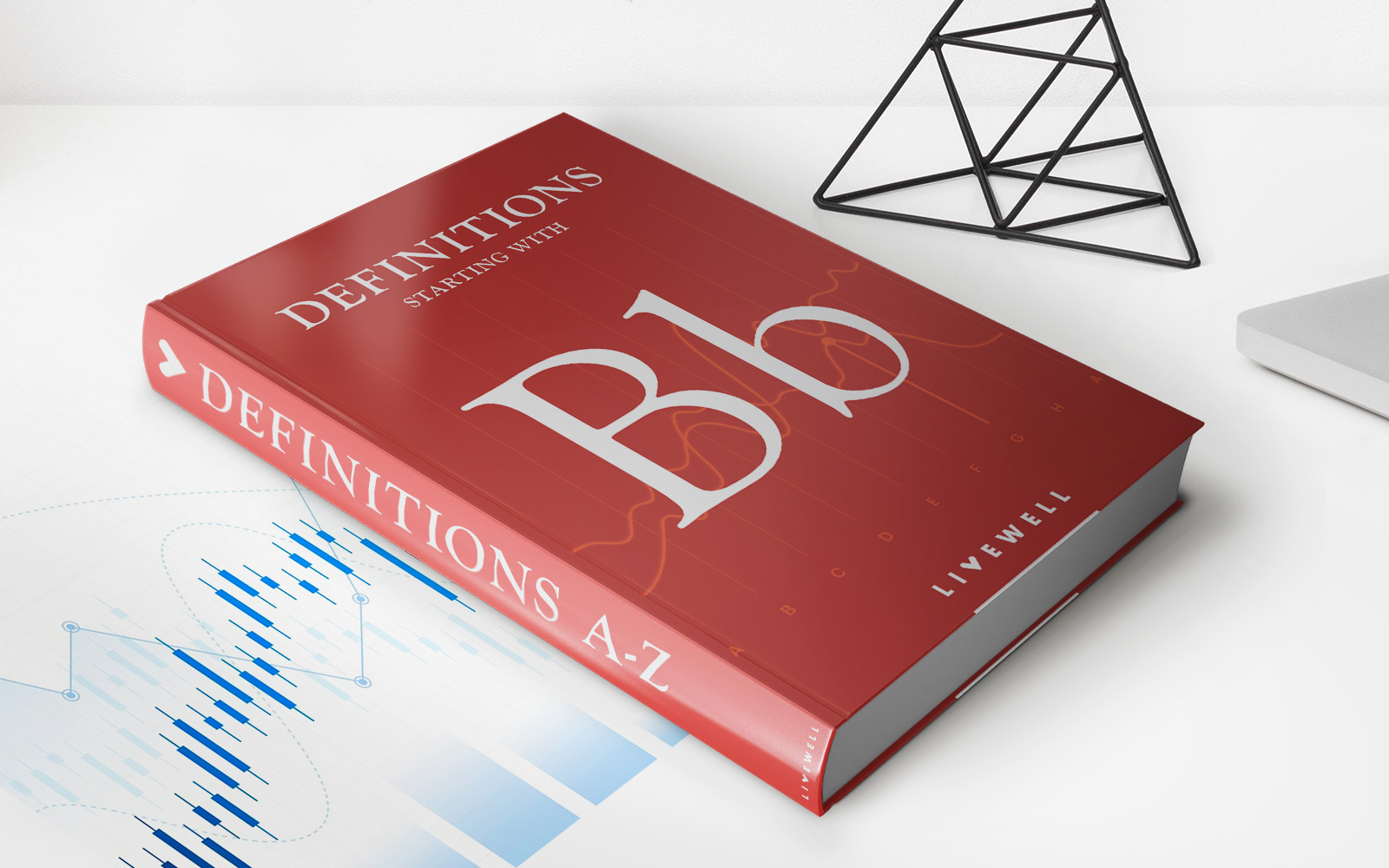

Finance
What Is An LOA In Insurance
Published: November 22, 2023
Learn about LOA in insurance and its importance in the world of finance. Understand how it impacts policyholders and insurance providers.
(Many of the links in this article redirect to a specific reviewed product. Your purchase of these products through affiliate links helps to generate commission for LiveWell, at no extra cost. Learn more)
Table of Contents
Introduction
Welcome to the world of insurance, where policies, claims, and various acronyms abound. One acronym that you may come across in the insurance industry is LOA, which stands for Letter of Authorization. Understanding what an LOA is and its role in the insurance process is crucial for policyholders and claimants alike.
When it comes to insurance, a Letter of Authorization (LOA) is a document that grants permission or authorization to an entity, such as a healthcare provider or a repair shop, to interact and communicate with an insurance company on behalf of the policyholder or claimant. An LOA is essentially a written consent that empowers the authorized party to access and share information, submit bills or invoices, and negotiate settlements directly with the insurance provider.
The primary purpose of an LOA in insurance is to streamline and expedite the claims process. By authorizing specific entities to act on their behalf, policyholders can ensure that their claims are handled efficiently and effectively. LOAs play a vital role in establishing trust and facilitating seamless communication between insurance companies, policyholders, and third-party service providers.
When it comes to insurance claims, an LOA serves as proof of consent and authority. It signals to the insurance company that the policyholder has given permission for a designated individual or organization to handle the claim on their behalf. Without a valid LOA, the insurance company may not recognize the authority of a third party to represent the policyholder or process the claim.
It is important to note that LOAs are not exclusive to a specific type of insurance. They can be used in various insurance sectors, including health insurance, auto insurance, property insurance, and more. The specific requirements and processes for obtaining an LOA may vary depending on the type of insurance and the policies of individual insurance companies.
In the next sections, we will explore the types of LOAs in insurance, the process of obtaining them, and the key considerations to keep in mind when issuing an LOA. We will also address common issues and challenges that can arise in relation to LOAs in insurance. So, let’s dive in and unravel the world of LOAs in insurance!
Definition of LOA in Insurance
In the realm of insurance, a Letter of Authorization (LOA) is a formal document that grants permission or authorization to a designated entity to act on behalf of the policyholder or claimant. It is a written agreement that empowers the authorized party to engage with the insurance company and handle various aspects of the insurance process.
An LOA establishes a legal relationship between the policyholder and the entity authorized to represent them. It outlines the specific responsibilities, limitations, and scope of authority granted to the authorized party. By providing explicit consent through an LOA, the policyholder allows the authorized entity to communicate with the insurance provider, access policy information, submit documentation, and negotiate settlements.
The LOA serves as a validation of the relationship between the policyholder and the authorized entity, cementing their rights and responsibilities within the insurance framework. It ensures that the policyholder’s interests are protected and that all necessary actions can be taken on their behalf, minimizing any delays or hurdles in the claims process.
The LOA typically includes essential details such as the policyholder’s name, contact information, policy number, effective dates, and the specific tasks or permissions granted to the authorized entity. It may also specify any limitations or restrictions regarding the duration of authorization or the scope of actions the authorized party can undertake.
It is crucial to note that an LOA is a legally binding document that requires the consent of the policyholder. The policyholder must willingly and knowingly grant permission to the authorized entity. This consent can be provided through a written agreement, an electronic signature, or any other acceptable method as per the insurance company’s guidelines.
Without a valid LOA, the insurance company may be unable to engage with the authorized entity or rely on their actions on behalf of the policyholder. Therefore, it is vital for policyholders to understand the importance of the LOA and to ensure that it is properly issued and authorized.
Now that we have a clear understanding of what an LOA in insurance entails, let us explore the purpose and significance of LOAs in the insurance industry.
Purpose of LOA in Insurance
The Letter of Authorization (LOA) serves several important purposes within the insurance industry. It acts as a crucial tool for policyholders, authorized entities, and insurance providers, facilitating smooth communication and efficient claims processing. Let’s delve into the key purposes of LOAs in insurance:
1. Granting Authority: The primary purpose of an LOA is to grant explicit authority to a designated entity to represent the policyholder or claimant. It establishes a legal relationship and empowers the authorized party to act on behalf of the policyholder, ensuring that their interests are safeguarded throughout the insurance process.
2. Streamlining Claims Process: LOAs play a vital role in streamlining the claims process. By authorizing a specific entity, such as a healthcare provider or an auto repair shop, to communicate directly with the insurance provider, policyholders can expedite the processing of their claims. This minimizes delays and ensures that all necessary information and documentation are promptly shared.
3. Ensuring Accuracy of Information: A properly executed LOA helps ensure the accuracy and integrity of information exchanged between the authorized entity and the insurance company. It provides the insurance provider with assurance that the authorized party has the necessary consent to access and share policy details, supporting documents, and other relevant information required for claims processing.
4. Facilitating Communication: LOAs facilitate seamless communication between the authorized entity, the policyholder, and the insurance provider. The authorized party can discuss claim-related matters, negotiate settlements, and seek clarifications directly with the insurer. This direct line of communication reduces misunderstandings and enhances efficiency in resolving issues or disputes that may arise during the claims process.
5. Protecting Policyholder’s Interests: By explicitly granting authority through an LOA, policyholders can ensure that their interests are protected and that their chosen authorized entity can advocate on their behalf. This is particularly important in complex insurance scenarios where multiple parties may be involved, such as in legal settlements or large-scale property damage claims.
6. Enhancing Efficiency and Convenience: LOAs eliminate the need for policyholders to be personally involved in every step of the claims process. By entrusting an authorized entity to handle the necessary tasks, policyholders can save time and effort, allowing them to focus on other priorities while still ensuring their claims progress smoothly.
Having explored the purpose of LOAs in insurance, we will now shift our focus to understanding the specific role that LOAs play in insurance claims.
Role of LOA in Insurance Claims
The Letter of Authorization (LOA) plays a critical role in insurance claims by establishing the authority and consent required for a designated entity to act on behalf of the policyholder. Let’s explore the key roles that LOAs fulfill in the realm of insurance claims:
1. Proof of Consent: An LOA serves as concrete proof that the policyholder has granted explicit consent to a third-party entity to handle their insurance claim. It demonstrates to the insurance company that the authorized entity has the necessary authority to initiate and engage in the claims process on behalf of the policyholder.
2. Authorized Communication: With a valid LOA, the authorized entity gains the ability to communicate directly with the insurance company on behalf of the policyholder. This direct line of communication allows for effective and efficient dialogue, enabling prompt resolution of any issues or inquiries that may arise during the claims process.
3. Document Submission: An LOA typically grants the authorized entity permission to submit necessary documents, such as medical records, repair estimates, or invoices, directly to the insurance company. This ensures that the required documentation reaches the insurer in a timely manner, expediting the claims assessment and settlement process.
4. Negotiation and Settlement: By virtue of an LOA, the authorized entity has the authority to negotiate with the insurance company on behalf of the policyholder. This includes discussing settlement terms, advocating for fair compensation, and ensuring that the policyholder’s best interests are represented during the claims settlement process.
5. Claim Process Administration: The authorized entity is responsible for managing and administering various aspects of the claims process, such as coordinating appointments, collecting relevant information, and liaising with relevant parties, including repair shops, medical providers, or legal representatives. The LOA grants them the authority to handle these tasks on behalf of the policyholder.
6. Compliance and Accountability: LOAs help ensure compliance and accountability in the claims process. The authorized entity is accountable for acting in the best interests of the policyholder and adhering to the terms and limitations outlined in the LOA. This helps mitigate the risk of unauthorized actions or potential conflicts of interest during the claims process.
7. Streamlining Claims Process: By authorizing a designated entity to act on their behalf, policyholders can streamline the claims process. The authorized entity can navigate the complexities of filing a claim, submitting required documentation, and handling correspondence with the insurance company. This reduces the burden on policyholders and allows for a smoother and more efficient claims experience.
In summary, LOAs in insurance claims provide the necessary authority, consent, and accountability for a designated entity to handle the claims process on behalf of the policyholder. They enable effective communication, document submission, negotiation, and administration, ultimately expediting the resolution and settlement of insurance claims.
Importance of LOA in Insurance Policies
The Letter of Authorization (LOA) holds significant importance in insurance policies, serving as a key document that ensures efficient communication, streamlined processes, and the protection of policyholder rights. Let’s delve into the reasons why LOAs are crucial in insurance policies:
1. Authorization and Consent: LOAs provide explicit authorization and consent from the policyholder to a designated entity to act on their behalf. This authorization is essential in cases where the policyholder may not be able to personally manage or handle their insurance matters, such as during a medical emergency or while away from home. It empowers the authorized entity to effectively communicate, make decisions, and initiate actions on behalf of the policyholder.
2. Streamlined Communication: LOAs enable direct and streamlined communication between the authorized entity and the insurance provider. This direct line of communication ensures that important information or instructions are conveyed accurately and efficiently, reducing the likelihood of miscommunication or delays in claims processing.
3. Facilitates Prompt Claims Handling: With a valid LOA in place, the authorized entity can promptly handle the necessary tasks related to claims processing. This includes submitting documents, providing required information, negotiating with the insurance company, and ensuring that the claims process moves forward smoothly and without unnecessary delays.
4. Protects Policyholder Rights: LOAs play a crucial role in protecting the rights and interests of policyholders. By specifying the authorized parties and their scope of authority, LOAs safeguard policyholders against fraudulent or unauthorized actions by other individuals or organizations. This ensures that only authorized entities interact with the insurance company on behalf of the policyholder, providing an additional layer of protection against potential misuse of their policy or personal information.
5. Promotes Efficiency and Convenience: LOAs enhance the efficiency and convenience of insurance processes. They allow policyholders to delegate certain responsibilities to trusted entities, freeing up their time and energy to focus on other matters. This is particularly beneficial in situations where policyholders may be incapacitated, unavailable, or prefer to have a designated representative handle their insurance affairs.
6. Establishes Liability and Accountability: LOAs clearly define the liability and accountability of the authorized entity in managing insurance policies. The authorized entity is bound to act in the best interests of the policyholder and adhere to the terms outlined in the LOA. This ensures that the authorized party is accountable for their actions and acts in accordance with the policyholder’s instructions and preferences.
7. Compliance with Legal and Regulatory Requirements: LOAs help insurance companies adhere to legal and regulatory requirements. By obtaining proper authorization through LOAs, insurance providers can ensure they are acting in accordance with applicable laws and regulations, protecting both the policyholder’s rights and their own legal obligations.
In summary, LOAs are essential in insurance policies as they establish authorization, streamline communication, ensure prompt claims handling, protect policyholder rights, promote efficiency, establish liability, and facilitate compliance with legal requirements. Through LOAs, policyholders can trust that their insurance affairs are managed effectively and that their interests are protected by trusted authorized entities.
Types of LOA in Insurance
Letter of Authorization (LOA) in insurance can take different forms and serve various purposes depending on the specific context and requirements of the insurance policy. Here are some common types of LOAs that are frequently utilized in the insurance industry:
1. Medical LOA: A medical LOA is commonly used in health insurance policies. It grants permission to a healthcare provider, such as a doctor or hospital, to access and share medical information related to the policyholder. This allows the healthcare provider to communicate directly with the insurance company, submit claims, and receive payments on behalf of the policyholder.
2. Auto Repair LOA: An auto repair LOA is often required in auto insurance policies when repair work is needed after an accident or damage. It authorizes a specific repair shop to communicate with the insurance company, obtain estimates, initiate repairs, and submit bills for reimbursement directly to the insurer.
3. Property Repair LOA: Similar to an auto repair LOA, a property repair LOA is used in property insurance policies. It authorizes a contractor or service provider to assess damages, provide repair estimates, and perform necessary repairs to damaged property. The authorized entity can communicate directly with the insurance company, facilitating the claims process and ensuring timely repairs.
4. Legal LOA: In certain cases, a policyholder may need legal representation during insurance-related matters, such as a personal injury claim. A legal LOA grants authority to a specified attorney or law firm to act as the policyholder’s legal representative. This allows the attorney to communicate with the insurance company, negotiate settlements, and handle legal proceedings on behalf of the policyholder.
5. Third-Party LOA: In some situations, a policyholder may authorize a third party, such as a family member, friend, or professional agent, to handle all insurance-related matters on their behalf. This type of LOA grants the authorized individual the authority to manage policy inquiries, file claims, and communicate with the insurance company as if they were the policyholder themselves.
6. Department of Motor Vehicles (DMV) LOA: An LOA may be necessary to authorize the release of certain information from the policyholder’s auto insurance policy to the Department of Motor Vehicles. This allows the DMV to verify insurance coverage, vehicle ownership, and other relevant details for compliance with motor vehicle laws and regulations.
7. Specialized Service LOA: In unique situations, specialized services may be required, such as a home healthcare provider, a towing service, or an emergency restoration company. An LOA specific to these services grants permission to the designated entity to interact with the insurance company, ensuring prompt and appropriate services are provided while adhering to the policy terms and conditions.
It is important to note that the types of LOAs may vary across insurance providers and jurisdictions. The specific requirements and processes for issuing these LOAs will depend on the policies and guidelines of the respective insurance companies and regulatory bodies.
In the next section, we will explore the process of obtaining an LOA in insurance, providing insights into the necessary steps and considerations.
Process of Obtaining an LOA in Insurance
The process of obtaining a Letter of Authorization (LOA) in insurance involves several steps to ensure proper authorization and compliance with the insurance company’s requirements. While the specific process may vary depending on the type of insurance and the policies of the insurance provider, here are the general steps involved in obtaining an LOA:
1. Identify the Authorized Entity: The first step is to identify the entity or individual who will be authorized to act on behalf of the policyholder. This can vary depending on the nature of the insurance policy and the specific needs of the policyholder. It could be a healthcare provider, repair shop, attorney, or any other designated representative.
2. Review the Insurance Policy: It is important to carefully review the insurance policy to understand the insurance company’s requirements and guidelines for issuing an LOA. This includes identifying any specific forms or documentation that may be necessary to initiate the process.
3. Gather Required Information and Documentation: Collect all the necessary information and documentation required for the LOA application. This may include policyholder details, contact information of the authorized entity, policy number, effective dates, and any other specific information requested by the insurance company.
4. Complete the LOA Application: Fill out the LOA application form provided by the insurance company. This form will typically require the policyholder’s signature as well as other relevant information about the authorized entity. Make sure to accurately provide all requested details and include any additional supporting documents, if required.
5. Submit the LOA Application: Once the LOA application is completed, submit it to the insurance company through the specified channels. This can be done electronically, via mail, or through the insurance company’s online portal. Ensure that the application is submitted within any specified timeframes outlined by the insurance provider.
6. Review and Approval: The insurance company will review the LOA application to ensure that it meets their requirements and complies with the policy terms. This may involve verifying the authorization, checking the authenticity of the signature, and confirming the authorization scope. If all requirements are met, the LOA will be approved and processed.
7. Notification and Documentation: Once the LOA is approved, the policyholder will receive notification from the insurance company. This confirmation may be provided in the form of a letter, an email, or through the online portal. It is important to retain a copy of the approved LOA for future reference.
8. Implementation: With the approved LOA in hand, the authorized entity can begin acting on behalf of the policyholder as specified in the LOA. They can communicate with the insurance company, submit claims, negotiate settlements, and perform other authorized tasks as needed.
It is crucial to follow the insurance company’s guidelines and processes when obtaining an LOA to ensure compliance and proper authorization. In case of any questions or concerns, reach out to the insurance company’s customer service department for assistance and guidance.
Now that we understand the process of obtaining an LOA, let’s explore the key considerations to keep in mind when issuing an LOA in insurance.
Key Considerations for Issuing an LOA in Insurance
When issuing a Letter of Authorization (LOA) in insurance, there are several important considerations to keep in mind to ensure the effectiveness and validity of the authorization. These considerations help protect the policyholder’s interests and ensure compliance with the insurance company’s policies. Let’s explore the key factors to consider when issuing an LOA:
1. Authorization Scope: Clearly define the scope of authority granted to the authorized entity in the LOA. Specify the tasks they are authorized to perform, the information they can access, and any limitations or restrictions on their actions. This ensures that the authorized entity acts within the boundaries of their authority.
2. Consent and Voluntariness: Ensure that the LOA is issued with the genuine consent and volition of the policyholder. The LOA should be signed or approved by the policyholder, acknowledging their understanding and agreement to grant authorization to the designated entity. In the case of electronic consent, take measures to secure and authenticate the policyholder’s electronic signature.
3. Clarity and Accuracy: Ensure that the LOA clearly and accurately identifies the authorized entity and the policyholder, includes their contact details, policy number, and any other required information. Mistakes or omissions can lead to delays or complications in processing claims and may result in the invalidation of the LOA.
4. Compliance with Legal Requirements: Consider any legal requirements or regulations that may apply to the LOA. Different jurisdictions or insurance sectors may have specific rules governing the issuance of LOAs. Ensure that the LOA complies with all applicable laws, regulations, and industry norms to avoid any potential legal issues.
5. Timely Submission: Submit the LOA application within the specified timeframe set by the insurance company. Failure to meet the submission deadline may result in delays in processing or even rejection of the LOA. Adhere to any specific instructions provided by the insurance company regarding the submission process.
6. Review and Confirmation: Before finalizing the LOA, carefully review all the details to ensure accuracy and completeness. Double-check that all necessary information and supporting documents are included. Upon confirmation of accuracy, submit the LOA to the insurance company for review and approval.
7. Communication and Follow-up: Maintain open communication with the authorized entity and the insurance company throughout the LOA process. Keep all parties informed of any changes, updates, or concerns. Follow up with the insurance company to ensure timely processing of the LOA and to address any questions or issues that may arise.
8. Periodic Review and Renewal: Regularly review the validity and effectiveness of the LOA. Assess whether any changes in circumstances or preferences require an update to the authorization. Some LOAs may have an expiration date, so ensure that the LOA is renewed or updated as necessary to maintain the authority granted to the authorized entity.
By considering these key factors when issuing an LOA in insurance, policyholders can ensure that the authorization is valid, accurate, and compliant with the insurance company’s requirements. This helps protect their interests and facilitates a smooth claims process through effective communication and authorized representation.
Now, let’s address some common issues that may arise in relation to LOAs in insurance.
Common Issues with LOA in Insurance
While Letter of Authorization (LOA) in insurance serves as an important tool for efficient claims processing and authorized representation, there are several common issues that policyholders may encounter when dealing with LOAs. Being aware of these issues can help policyholders navigate the claims process more effectively. Let’s explore some of the common issues with LOAs in insurance:
1. Incomplete or Inaccurate Information: One of the most common issues is the submission of an LOA with incomplete or inaccurate information. Missing or incorrect policyholder details, contact information, or policy information can lead to delays or rejection of the LOA. It is essential to carefully review the LOA application and ensure all necessary information is provided accurately.
2. Lack of Proper Authorization: Sometimes, policyholders may fail to obtain proper authorization before an LOA is issued. This can occur if the LOA is signed by someone without the necessary authority, such as a non-permitted representative or an unauthorized family member. Insurance companies require valid and legally authorized consent to ensure compliance and protect policyholders’ interests.
3. Limited Authorization Scope: Another issue is when the LOA fails to provide clear and comprehensive authorization, specifying the tasks, actions, or information that the authorized entity is allowed to handle. Without a well-defined scope of authority, there may be confusion or misunderstandings between the authorized entity, the policyholder, and the insurance company, potentially leading to delays or complications in claims processing.
4. Expired or Outdated LOAs: LOAs may have expiration dates or be limited to a specific time period, especially in situations where continuous authorization is not required. If an LOA is expired or no longer valid, the insurance company may disregard it, resulting in a disruption in authorized representation and claims processing. Regularly review and renew LOAs, ensuring they remain current and applicable.
5. Failure to Notify Authorized Entities: Policyholders may neglect to inform authorized entities about the issuance or changes to the LOA. This lack of communication can lead to delays or miscommunication when the authorized entity attempts to interact with the insurance company on behalf of the policyholder. Keeping the authorized entity well-informed and providing them with necessary updates is essential for a seamless claims process.
6. Third-Party Compliance: Some insurance policies require authorized entities to meet specific compliance criteria, such as maintaining certain certifications or professional qualifications. Failure to ensure that the authorized entity meets these criteria can result in the insurance company rejecting the LOA. It is crucial to verify and validate the compliance status of the authorized entity as per the insurance company’s requirements.
7. Legal and Regulatory Considerations: LOAs must comply with applicable legal and regulatory requirements. Insurance companies may have specific guidelines and restrictions on the issuance and acceptance of LOAs. Failure to meet these requirements can lead to complications or even legal issues. It is essential to familiarize yourself with the relevant laws and regulations surrounding LOAs in insurance.
If any of these issues arise, it is important to promptly address them with the insurance company. Communicate any errors, changes, or concerns regarding the LOA to ensure that the authorized representation remains valid and effective throughout the claims process.
Now, let’s summarize our discussion on LOAs in insurance.
Conclusion
Understanding and recognizing the significance of a Letter of Authorization (LOA) in insurance is vital for policyholders and claimants. LOAs serve as a means to authorize designated entities, streamline communication, and facilitate efficient claims processing. By granting explicit consent, LOAs ensure that authorized entities can act on behalf of policyholders, communicate with insurance providers, submit documentation, and negotiate settlements.
Throughout this article, we explored the various aspects of LOAs in insurance. We learned about the definition of LOA, its purpose, and its crucial role in insurance claims. LOAs provide proof of consent, authorize communication, and allow for smooth document submission and negotiation, safeguarding policyholder rights and expediting the claims process.
We also discussed the importance of LOAs in insurance policies, emphasizing how they grant authorization, protect policyholder interests, promote efficiency, and ensure compliance with legal requirements. LOAs establish clear guidelines, enhance communication, and protect policyholders from unauthorized actions or mishandling of their insurance affairs.
Moreover, we examined different types of LOAs, such as medical LOAs, auto repair LOAs, and legal LOAs, each serving specific purposes in the insurance context. We looked at the process of obtaining an LOA, which involves identifying the authorized entity, gathering necessary information, completing the LOA application, and submitting it to the insurance company for review and approval.
Furthermore, we emphasized key considerations for issuing an LOA, including defined authorization scope, voluntary consent, accuracy of information, compliance with legal requirements, and timely submission. By adhering to these considerations, policyholders can ensure the validity and effectiveness of their LOAs.
We also highlighted common issues with LOAs in insurance, such as incomplete information, lack of proper authorization, limited authorization scope, expired LOAs, failure to notify authorized entities, third-party compliance, and legal and regulatory considerations. Familiarizing themselves with these potential issues enables policyholders to navigate the LOA process more effectively and prevent unnecessary delays or complications.
In conclusion, LOAs are essential in the insurance industry, serving as a mechanism to authorize and empower designated entities to act on behalf of policyholders. They streamline communication, protect policyholder rights, and expedite claims processing. By understanding the importance, types, process, considerations, and potential issues relating to LOAs, policyholders can navigate the insurance landscape with confidence and ensure a smooth and efficient claims experience.














